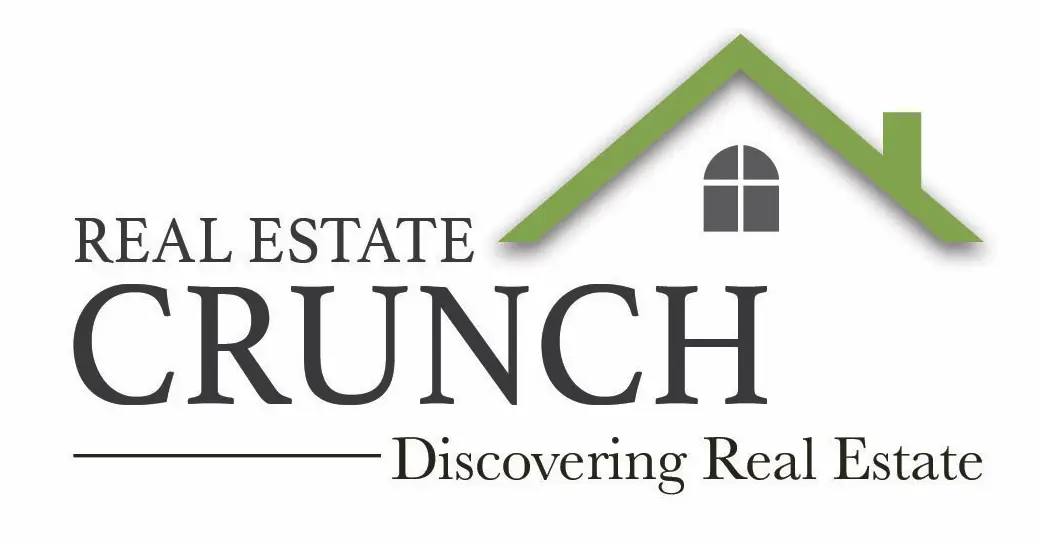Real estate is a complex sphere laden with multidimensional factors that play instrumental roles in determining its success. One such factor, often undervalued, is Situs – the physical location of a property. Fathoming the depths of this significant facet can empower individuals to navigate the intricate realm of real estate.
In essence, Situs broadly measures the physical location and influences the inherent worth of a property. Its significance is equally realized in aspects such as the demand and supply of properties, property taxes, and strategic location selection. Engaging in this enlightening examination of Situs will equip you with the essential knowledge to understand and capitalize on its impacts.
Table of Contents
- The Definition of Situs
- Influence of Situs on Property Values
- Interplay of Situs, Demand, and Supply
- Situs and Property Taxes
- Innovative Strategies in Location Selection
- Related Questions
The Definition of Situs
Entering the lexicon of real estate terminology can sometimes feel akin to mastering a new language altogether. Among the many industry-specific words, “Situs” sounds exotic, piquing curiosity. Before we delve into a deeper understanding of the term and how it influences real estate operations, let’s first aim to decipher the literal meaning.
Situs is a Latin term meaning location or position. When applied to real estate, it refers to a property’s actual location or physical placement.
However, it’s important to note that the situs concept extends beyond mere geography. It dives further into the characteristics and intrinsic values of the property’s position, encompassing external elements that influence its worth.
A property’s situs describes its physical location and includes associated factors such as the neighborhood’s reputation, accessibility to transport options, proximity to essential amenities, and zoning regulations. It’s decidedly true when they say that real estate operates on a core principle: “location, location, location.”
For instance, a beachside property in Miami will have a dramatically different situs value than a similar property in landlocked Idaho.
This ‘situs value’ is dictated by the unique combination of property characteristics and surroundings, contributing significantly to the overall property price.
Situs plays an incredibly influential role in real estate valuation. Valuation experts, buyers, and sellers all factor in the status of a given property to determine its market value. For example, two properties might have the exact size, construction quality, and amenities.
However, suppose one is in an up-and-coming district with access to top-rated schools, bustling markets, and gourmet restaurants, while the other is in an outlying area with limited amenities. In that case, their situs values will significantly differ.
Moreover, situs extends into real estate investment trusts (REITs). Situs determination can impact income and franchise tax liabilities based on the operation’s geographical income sources. Thus, proper situs identification can strongly impact business strategy and investment returns.
In essence, situs translates into more than a property’s physical location; it embodies the entire spectrum of real estate valuation. Understanding situs could fill a crucial gap in real estate knowledge, better equipping individuals to make informed property decisions, whether it’s individual buyers, entrepreneurs, or seasoned investors.
To sum it up, situs is an integral ingredient in the recipe of a property’s desirability and value. Attention to this component can be a game-changer in the vast and dynamic real estate arena.
So, while Situs might sound like an industry jargon term to some, it holds the key to innovative real estate strategies and success for the savvy entrepreneur. It’s not just about where your property is but how all the external factors orbiting that location contribute to its ultimate value. That’s the true meaning of Situs.
In the world of real estate, it’s not just state, city, or neighborhood—it’s a comprehensive engagement with the larger concept of location. And once mastered, this term could unlock unprecedented opportunities for intelligent, informed decisions in the real estate market.

Influence of Situs on Property Values
The Tale of Situs: Unearthing Profits in the Real Estate Market
Wise investors and budding entrepreneurs always delve into corners that might reveal untapped opportunities. In the real estate universe, Situs is an overlooked yet potent aspect. If adequately analyzed and utilized, situs could be a game-changer for businesses eyeing a prosperous venture in the property market.
But how does it influence property values? That certainly provokes thought. Let’s dive in.
When speaking about the real estate world, location is critical, and the concept of situs overlaps substantially with location, adding various nuanced layers. However, just understanding what situs is won’t suffice. It is most beneficial when it shapes strategic decisions, driving real estate value.
Situs doesn’t merely live in the realm of physical location – it bleeds into the essence of economics and the rhythm of society. It is an amalgamation of factors determining desirability, accessibility, and the possibility of profiting from a property—the more favorable the situation, the better the property’s potential for a higher value.
Moreover, situs and its impact on real estate prices don’t exist in isolation. The housing market doesn’t resist the dynamics of supply and demand. A well-placed property, with high situs value, drives demand and, along with it, the price – This is Economics 101. Yet, it isn’t as simple as it appears, particularly in contexts of complex properties and multifaceted markets.
Venturing beyond traditional real estate, consider Real Estate Investment Trusts (REITs). While the underlying principle holds, cumulating portfolio properties with desirable situs adds intricacies and opportunities. It’s not just about individual property value – exploring synergies and leveraging situs to enhance investment returns.
The importance of situs leaves its footprints even on urban planning, impacting a community’s social, economic, and environmental aspects. When the dust settles, businesses that comprehend and apply the situs concept might find themselves ahead of the curve, clearly seeing the hidden potential to be unraveled.
Gradually, situs gets its lawful attention battling the arena of real estate taxation. Tax implications shift dramatically once situs comes into play. Knowing this, savvy entrepreneurs factor situs into their financial calculations, influencing the final net property values.
Summing up, situs is no ordinary player in the real estate game: it’s potentially a power player. In the hands, or rather minds, of the strategic investor, it could enhance property valuation dynamics and be the difference between an ordinary real estate business and a thriving one.
Top thinkers, perceptive entrepreneurs, and strategic investors- take note. The secret recipe for outshining in the property market may lie in this unsung hero: situs.

Interplay of Situs, Demand, and Supply
Understanding the role of situs in market dynamics is akin to holding the key to Pandora’s box. We’ve already analyzed the concept of situs, its underlying characteristics, and implications for property values, REITs, and real estate investing.
Let’s now delve into its contribution to demand and supply equilibrium in the real estate space.
Situs, which broadly encapsulates geographical location and its associated economic, social, and environmental facets, drastically influences the supply side of the real estate market. It dictates the availability of land for residential, commercial, or industrial development.
Terrain, climate, and natural resources of a given situation can herald a supply boom or impose a stark limitation. For example, a hilly terrain or location prone to natural disasters often results in limited real estate development and reduced supply.
On the demand side, situs woos potential buyers based on factors such as accessibility – proximity to employment centers, schools, hospitals, and entertainment hubs; amenity richness – the existence of parks, shopping areas, and cultural hot spots; and neighborhood attributes, including crime rates and demographic trends.
These components can sway buyer perceptions, igniting a surge in demand or creating a lull in a comparatively ‘less attractive’ situation.
Situs’ power in influencing the real estate value network must not go unnoticed in urban planning and community development. Governments, urban planners, and developers must acknowledge this influence when crafting zoning laws, green space allotments, or public transportation access. A well-planned situation can boost demand and supply, ensuring balanced growth and equitable monetization while preventing ‘bubble’ situations.
Real estate taxation is another realm where situs holds the reigns. Property taxes, a primary revenue source for local governments, are significantly impacted by situs. Higher-valued locations typically attract higher tax rates. Conversely, properties in ‘less-attractive’ situations might be taxed less.
An understanding of these nuances helps both investors and governing bodies to optimize their financial management.
The situs factor extends beyond simple property valuation and wields a far-reaching impact on the whole real estate ecosystem. As an entrepreneur or investor, comprehending the role of situs in real estate market dynamics offers the strategic advantage of exploiting localized trends and identifying potential growth areas or untapped investment opportunities.
Whether you’re a seasoned investor navigating the complexities of the real estate market or a policy planner striving to create vibrant, sustainable communities, situs, ever so slightly, always tips the equilibrium in the dance of demand and supply.
Stepping back to understand the situation’s more profound influence can offer a competitive edge, enriching your playbook in this high-stakes real estate game.

Situs and Property Taxes
Delving into property taxes, one must understand the role of situs. As an entrepreneur analyzing the current trends in the real estate market, identifying and making decisions based on the nuances of property taxation can pave the way to financial success and strategic growth.
This article moves the spotlight onto situs and examines how it shapes and impacts property taxes.
Given the intimate interplay between taxation and the real estate market’s dynamics, situs naturally intertwines itself within property taxes. Property taxes are primarily based on the property’s assessed value, and situs is integral in determining this value.
Herein lies the masterstroke – the nexus between situs and the value of a property directly impacts the property taxes levied on it. Suppose a property’s situs is placed in a coveted location, a wealthy neighborhood, or a booming economic zone. In that case, the result will be a higher assessed property value and, by extension, increased property taxes.
Real estate moguls and savvy investors are no strangers to property taxes and, more essentially, the impact of Situs on these taxes. They leverage this understanding to make data-driven decisions about their investments.
A higher tax burden might deter some investors. Still, the savviest among them understand that this is often a signal of high property value and high potential for returns on investment.
Situs doesn’t shy away from directly influencing commercial real estate ventures either. Business owners looking to buy or lease properties are advised to consider potential locations’ situation and subsequent tax commitments.
Rather than merely viewing taxes as an inevitable expense, considering them part of a comprehensive cost-benefit analysis can lead to beneficial decision-making. For instance, a business likely to reap substantial benefits from being located in a bustling economic hub might find higher property taxes a pittance compared to the potential increase in revenues.
On the other side of the equation, governing bodies consider situs for levying and adjusting property taxes. Local councils and municipal authorities consciously structure tax rates based on the situation, increasing rates for higher-value locations while offering potential breaks or incentives for less desirable areas.
Utilizing this assessment continually allows cities and states to balance developmental efforts, providing an effective tool for urban planning and investment attraction.
In the real estate investing space, the connections are clear. The more desirable the situation – through quantifiable data such as access to amenities, economic robustness, and neighborhood attributes – the higher the tax assessment.
However, the sophisticated investor sees not an impediment but an opportunity derived from the very heart of the real estate market: location, location, location.
So, the conversation between situs and property taxes is not just a dialogue – it’s a compelling narrative in the expansive book of real estate. The savvy investor, innovative entrepreneur, and strategic policy planner pivot their moves around this interaction.
In this game of numbers and strategy, understanding the role of situs in property taxes is not just beneficial; it’s a dire necessity in today’s rapidly evolving real estate market.

Innovative Strategies in Location Selection
The real estate market is an unpredictable beast, with many variables that sway it one way or the other. While location was once seen as the primary factor affecting real estate values, recent trends have spotlighted the importance of leveraging innovative strategies regarding location selection.
The core question now becomes: Where? Real estate is no longer about just buying and selling. It’s about establishing strategies, implementing plans, and seeing them come to fruition by filling a market need.
One innovative approach toward profitable location selection is integrating technology in real estate. Innovators and investors are harnessing the power of Big Data analytics to make informed decisions about property locations.
Using artificial intelligence and machine learning algorithms, important insights can be drawn from demographic data, economic indicators, real estate trends, neighborhood statistics, and more to anticipate market behaviors and identify high-potential locations.
Another strategy lies in identifying underrated towns and neighborhoods poised for growth. Forward-thinking investors see potential in markets where gentrification occurs, assuring growth with an increased demand for housing and commercial properties.
Before embarking on this path, however, careful research on present and forecasted economic conditions, infrastructural developments, and shifts in job markets is crucial.
Consider also the concept of “last-mile” real estate. This property selection strategy is derived from an e-commerce perspective where the last leg of delivery – the “last mile” is often the most expensive and inefficient.
Acquiring properties in locations that reduce these “last-mile” costs can generate massive rewards. With the rise of online retail and on-demand services, properties that offer proximity to urban consumers or robust transport infrastructure can be an excellent opportunity.
Opportunity zones also present favorable investment options. These are economically distressed areas where new investments might be eligible for preferential tax treatment. As part of the 2017 Tax Cuts and Jobs Act, taxpayers can defer tax on prior gains invested in a Qualified Opportunity Fund (a fund set up to invest in eligible property in an Opportunity Zone).
This strategy not only provides economic benefits to investors but also aids in the revitalization of such regions.
Furthermore, ecological sustainability can enhance the desirability and value of a location. Real estate in regions offering green spaces, sustainable buildings, proximity to clean energy sources, and comprehensive waste management systems can be beautiful to environmentally conscious buyers and tenants, thereby boosting real estate values and returns.
Finally, let’s not overlook the importance of political and legal parameters. Changes in zoning ordinances, tax laws, or regulatory frameworks can significantly impact the value of real estate properties. Investors can pinpoint where to deploy their capital for maximum returns by staying updated with these changes.
To excel in real estate investment is less about betting on certainty and more about managing risks. Choosing the right location involves more than intuition or historical trends; it requires a comprehensive understanding of diverse factors driving market value.
Employing these innovative strategies for location selection in real estate forecasting will enable investors to stay ahead of the game and confidently navigate the market’s dynamic landscape.

Embracing strategies adaptable to changing trends ensures future success in real estate. A keystone to such strategies is recognizing the significant role that Situs plays. An understanding of Situs shatters generic preconceptions, replacing them with a multifaceted view of the real estate field.
From the correlation between property value and location to the implications of Situs on demand, supply, and taxes, this expansive understanding is invaluable. Knowledge of the latest, innovative strategies in location selection adds another layer to the savvy investor’s toolkit. As we navigate the intricate corridors of real estate, let us remember Situs’s paramount role in shaping the success marker.
Real Estate Crunch gives you real property and real estate information and advice. We offer a free monthly newsletter; you can sign up for our newsletter by clicking here.
We also have a weekly podcast called “Real Estate Crunch” on all major podcast platforms. Listen to our podcast by clicking here.
Follow us on our social media platforms – Facebook and Instagram.
Related Questions
Can Manufactured Homes Be Moved?
Many manufactured homes cannot be moved. If you are going to move to a manufactured home, there are many things that you should consider about moving house. Today, many manufactured homes are grounded in place, and it can be challenging to tell a manufactured home from a traditional site-built home. Generally speaking, moving a manufactured home is both a costly and complex process.
By clicking here, you can read more about Can Manufactured Homes Be Moved?
Manufactured Vs. Modular Homes, How Can You Tell?
Manufactured homes are built to HUD standards. Before 1976, Manufactured homes were known as mobile homes. Modular homes are built off-site but must follow all the federal housing standards and local codes or local requirements.
By clicking here, you can read more about Manufactured Vs. Modular Homes, How Can You Tell?
The Real Estate Bundle Of Rights Explained
A bundle of rights is your right as a property owner. It is all the rights you have to your property as the rightful and outright owner. Understanding these rates and whether you have full access to all your rights or if there may be HOA or local laws that may put exceptions onto your bundle of rights is essential.
By clicking here, you can read more about The Real Estate Bundle Of Rights Explained.


